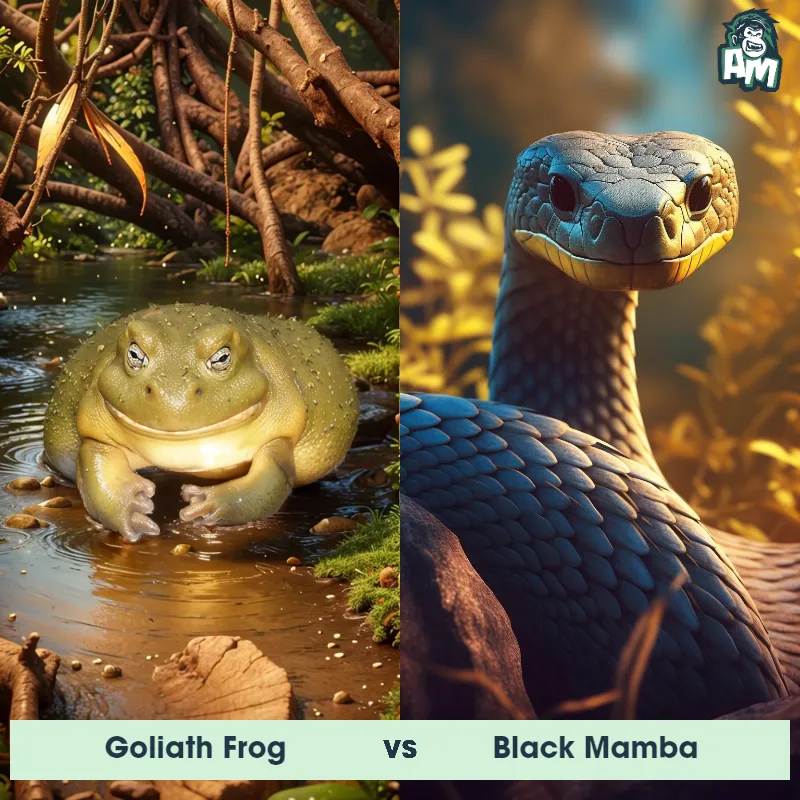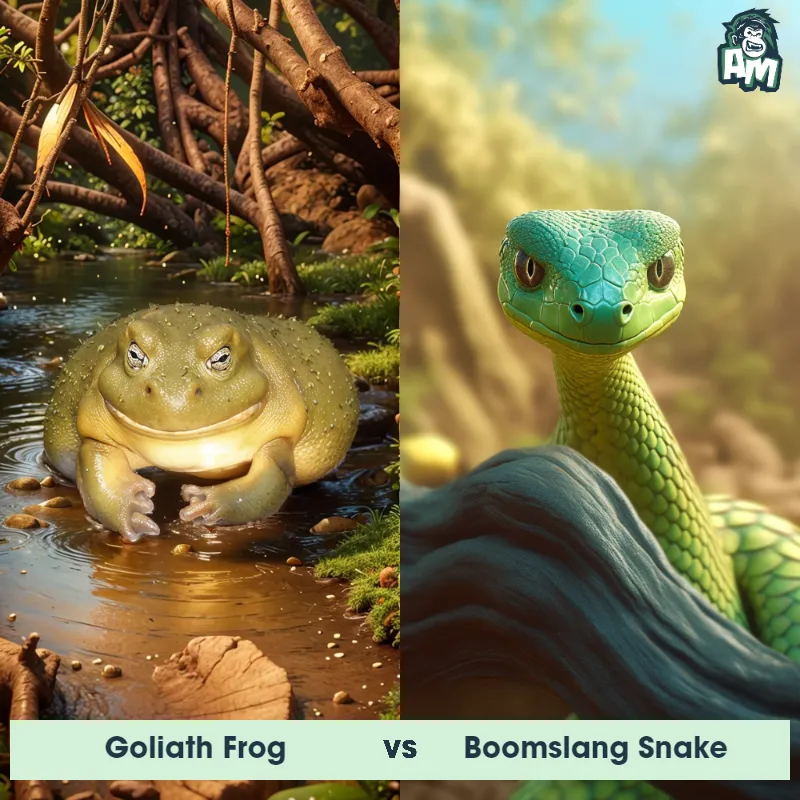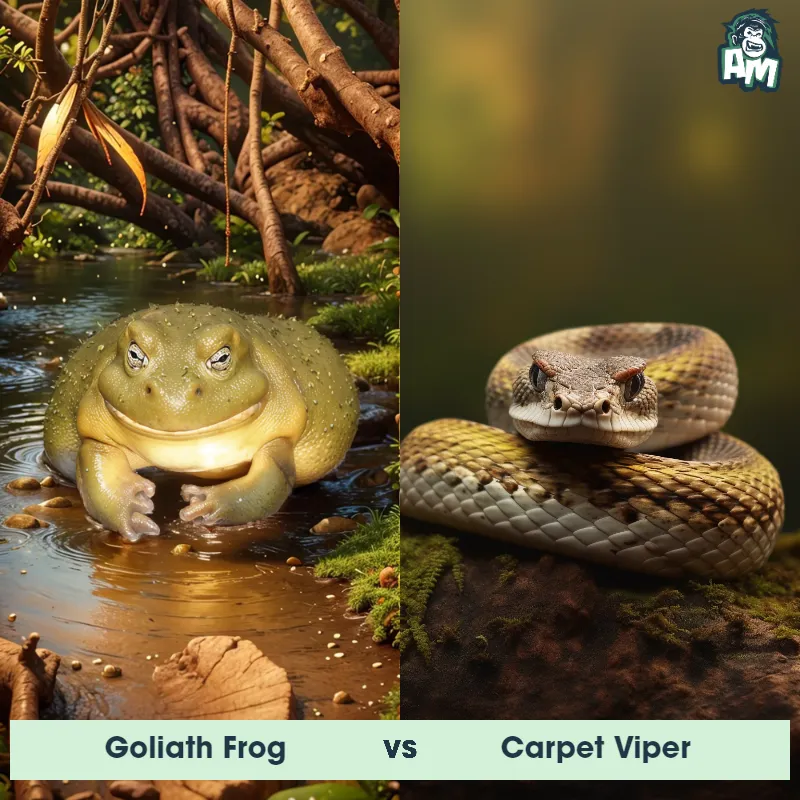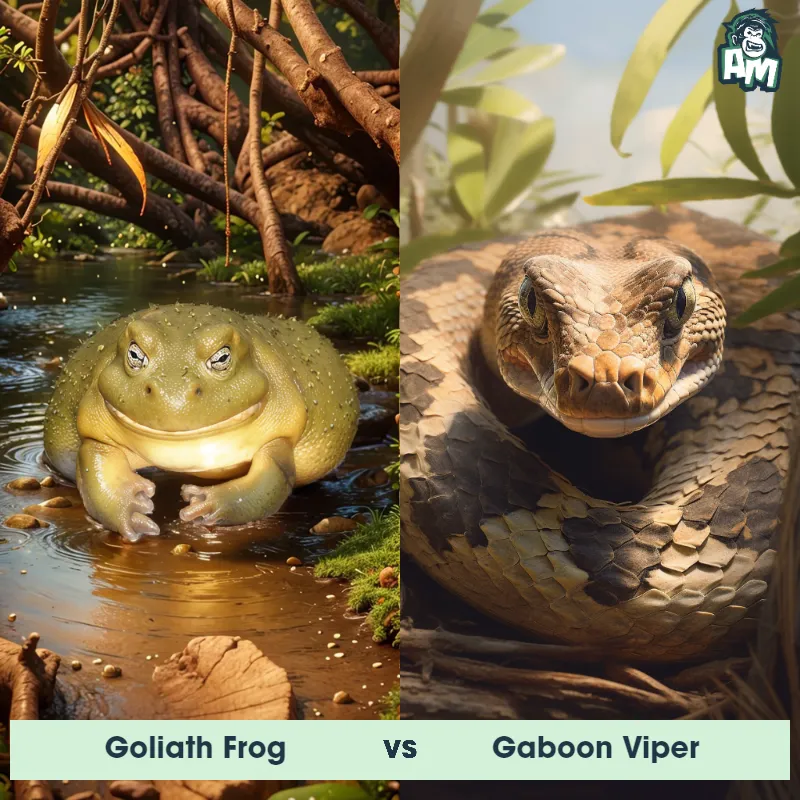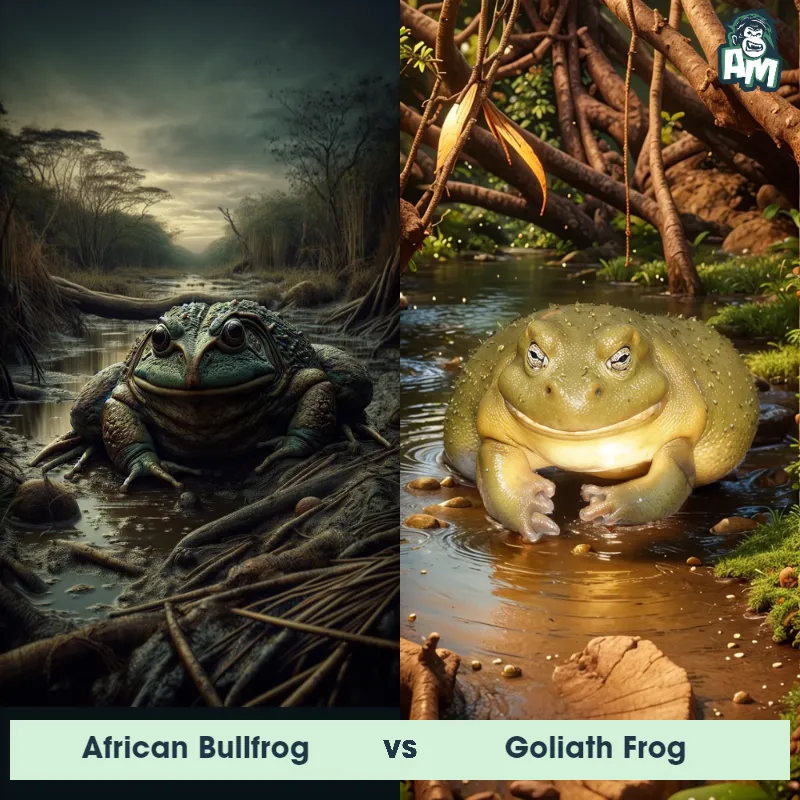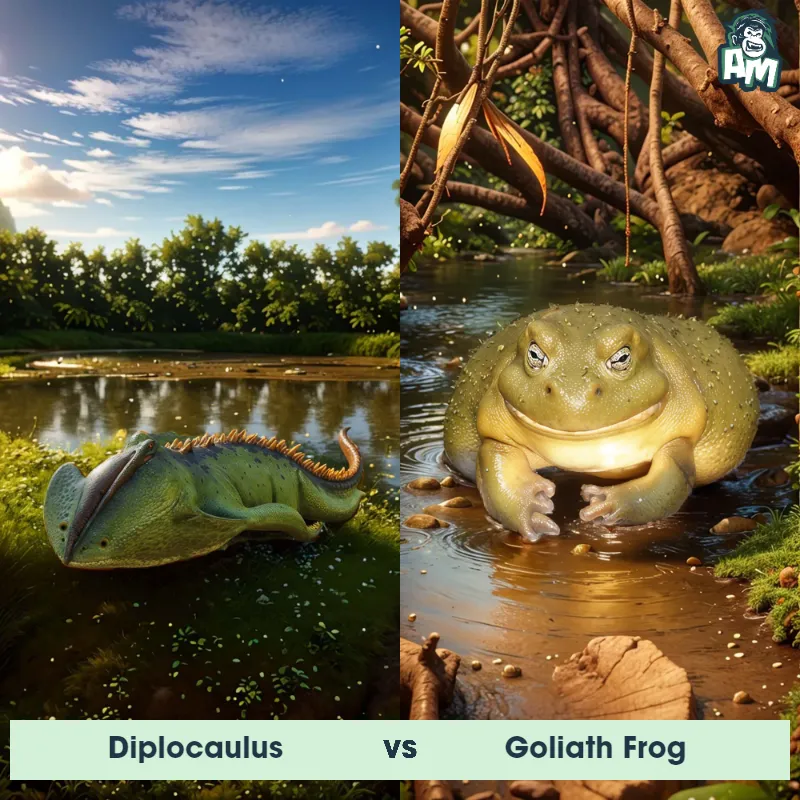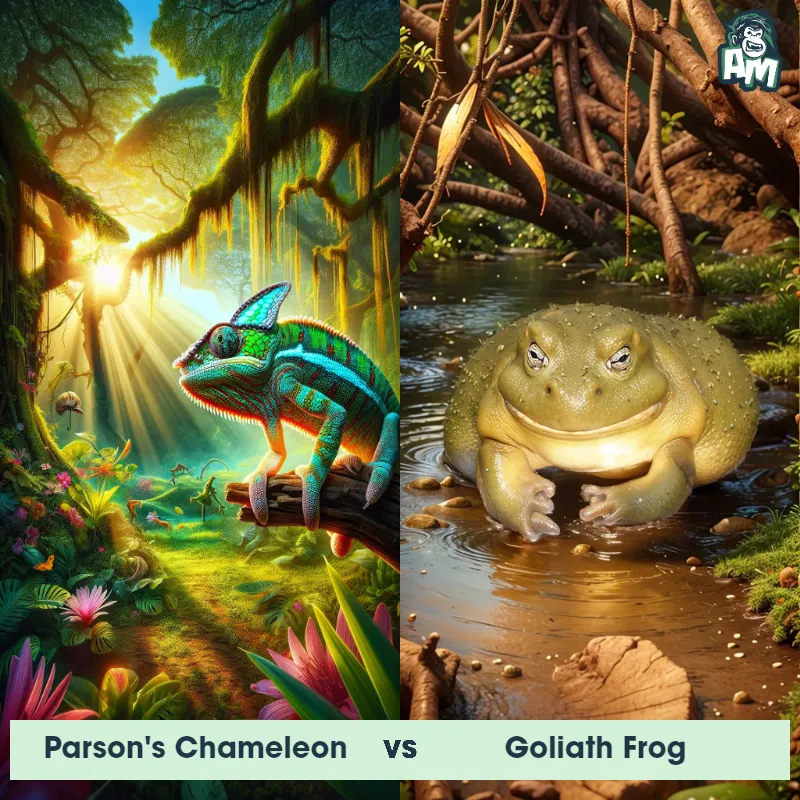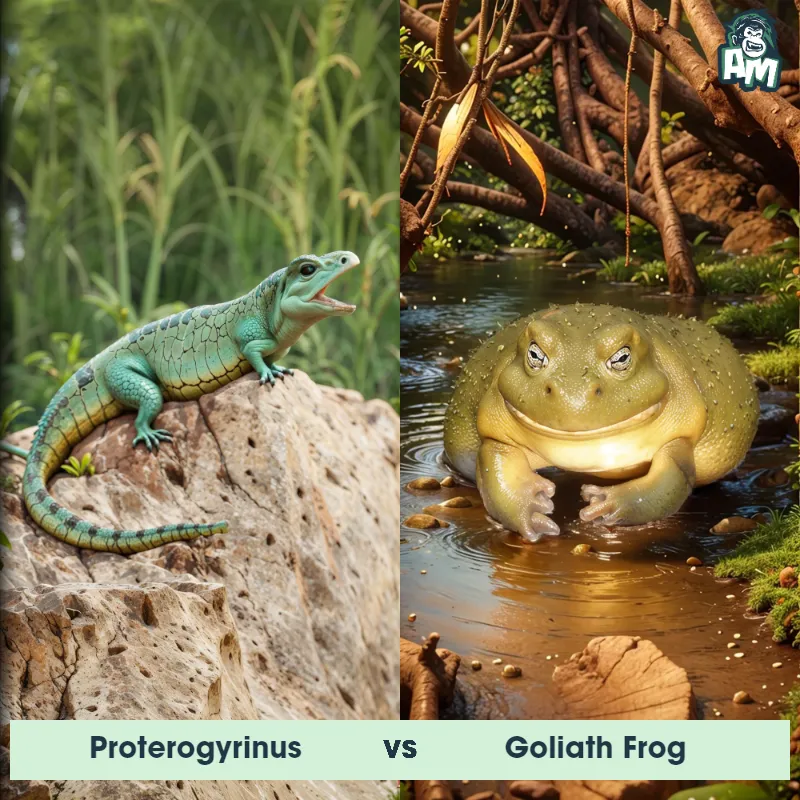The Goliath Frog
The Goliath Frog, also known as the Giant African Bullfrog, is the largest frog in the world, reaching lengths of over a foot and weighing up to 3.3 kilograms. This impressive amphibian has a mottled greenish-brown skin, with webbed feet and powerful hind legs. They are mainly found in fast-flowing rivers and streams in Equatorial Guinea and Cameroon.
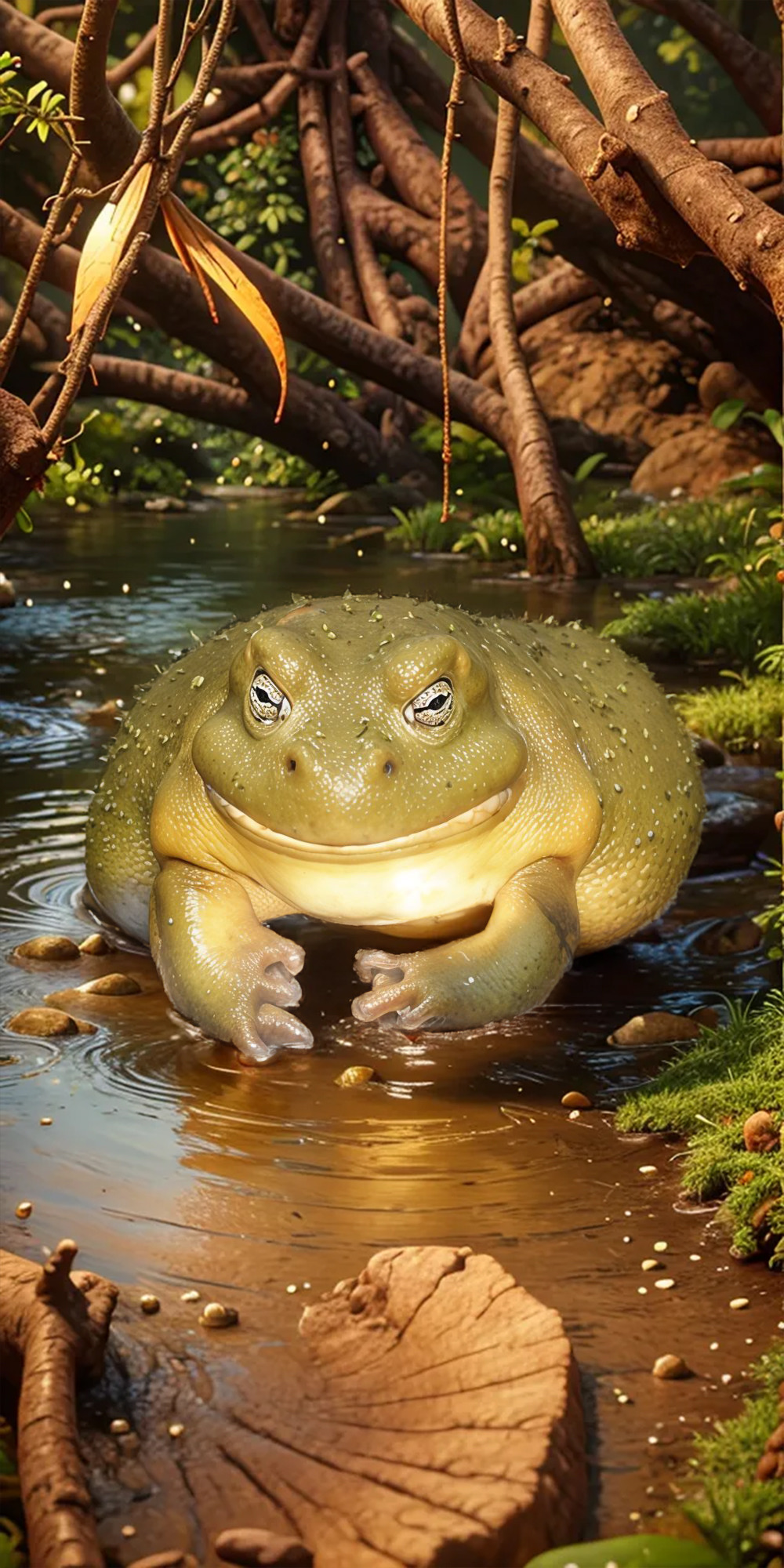
| Goliath Frog | |
|---|---|
| Size | Up to 30 centimeters (12 inches) |
| Weight | Over 3 kilograms (6.6 pounds) |
| Speed | 15-20mph (24-32km/h) |
| Key Strength | Powerful hind limbs for jumping |
| Biggest Weakness | Limited defensive capabilities |
| Scientific Name | Conraua goliath |
| Family | Conrauidae |
| Habitat | Fast-flowing rivers and streams |
| Geography | West Africa |
| Diet | Insects and small vertebrates |
| Lifespan | 10 years - 15 years |

The Goliath Frog
The Goliath Frog, also known as the Giant African Bullfrog, is the largest frog in the world, reaching lengths of over a foot and weighing up to 3.3 kilograms. This impressive amphibian has a mottled greenish-brown skin, with webbed feet and powerful hind legs. They are mainly found in fast-flowing rivers and streams in Equatorial Guinea and Cameroon.
Fun Fact: The Goliath Frog's tadpoles can take up to 3 years to fully metamorphose into adults, making them one of the slowest-growing amphibians in the world.
| Goliath Frog | |
|---|---|
| Size | Up to 30 centimeters (12 inches) |
| Weight | Over 3 kilograms (6.6 pounds) |
| Speed | 15-20mph (24-32km/h) |
| Key Strength | Powerful hind limbs for jumping |
| Biggest Weakness | Limited defensive capabilities |
| Scientific Name | Conraua goliath |
| Family | Conrauidae |
| Habitat | Fast-flowing rivers and streams |
| Geography | West Africa |
| Diet | Insects and small vertebrates |
| Lifespan | 10 years - 15 years |
Goliath Frog Matchups
We use AI to simulate matchups between the Goliath Frog and other animals. Our simulation considers size, strength, and natural predatory behaviors to determine the most likely outcome.

Can't find the Matchup you want?
Create Your Own MatchupGoliath Frog: Diet, Predators, Aggression, and Defensive Behaviors
What do Goliath Frogs eat?
Goliath Frogs primarily feed on insects, invertebrates, small rodents, and even small birds. They are opportunistic feeders and will consume anything they can catch and overpower.
Do Goliath Frogs have any predators?
Goliath Frogs, despite their large size, are still preyed upon by a variety of animals in their natural habitat. Their main predators include snakes, predatory birds, and mammals such as otters and large fish.
Are Goliath Frogs aggressive?
Goliath Frogs are known to be relatively docile and shy creatures. They are not aggressive towards humans or other animals unless they feel threatened or cornered, in which case they may emit alarm calls or leap away to safety.
Do Goliath Frogs fight?
Goliath Frogs are not known to engage in physical fights with each other or other animals. They typically rely on their large size and powerful hind legs to intimidate potential threats or competitors.
How do Goliath Frogs defend themselves?
Goliath Frogs have several ways to defend themselves against predators. They can camouflage themselves in their environment, stay motionless to avoid detection, and use their powerful hind legs to leap away quickly if threatened. They may also emit loud distress calls to alert nearby frogs or animals.
What is the biggest weakness of Goliath Frogs in a fight?
Despite their size and strength, Goliath Frogs are relatively slow-moving and may struggle to defend themselves in a fast-paced, aggressive encounter. Their large bodies are also vulnerable to attacks from agile predators that can outmaneuver them.
Fun Fact: These massive frogs are known for their loud and resonant calls, which can be heard over long distances. Their calls are a vital component of their breeding behavior.
Fun Fact: Goliath Frogs have a unique way of caring for their young. The male will create a foam nest near the water's edge, where the female will lay her eggs. The male then guards the nest and keeps it moist until the tadpoles hatch and can swim away.



